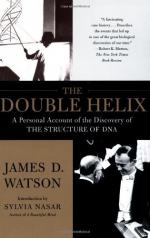|
This section contains 213 words (approx. 1 page at 400 words per page) |

|
1950s: Animal scientist C. R. Henderson helps New York dairy cattle breeders become world leaders in applied genetics. The key is artificial insemination, which creates a larger number of milk-producing cows.
1960s: The Green Revolution is a worldwide attempt to increase food production by creating plant varieties more responsive to specific fertilizers. It results in a higher yield of food, but there are concerns over health issues and over political control of which farmers are allowed to grow more crops.
1990s: ' 'FlavrSavr" tomatoesgenetically engineered for a longer shelf lifeare introduced into American grocery stores. Few consumers are impressed and some worry that the produce is unhealthy.
1950s: Biologist Arthur Kornberg produces DNA in a test tube.
1960s: Biologists fuse human and mouse cells to create hybrid cells that cast off all but a few of the human chromosomes. Since any human...
|
This section contains 213 words (approx. 1 page at 400 words per page) |

|




